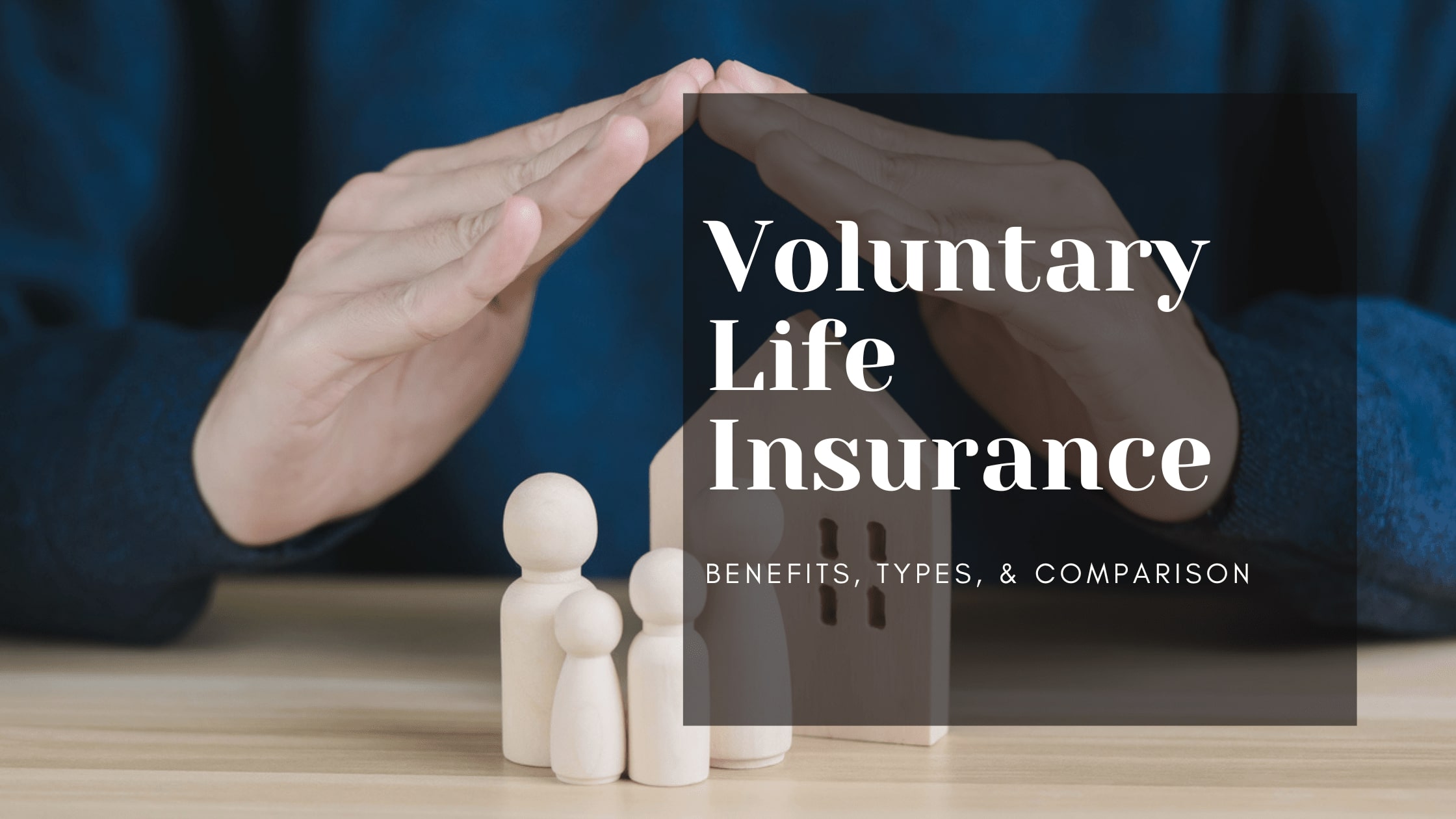
Voluntary life insurance is a type of life insurance you can choose to buy through your employer, often at a lower cost. It provides financial support to your loved ones if you pass away. Unlike mandatory life insurance from your employer, you can decide how much coverage you want.
Voluntary life insurance is crucial because it offers your family extra financial security and stability. By learning about voluntary life insurance, you can make better decisions about your coverage options.
Types of Voluntary Life Insurance
Term Voluntary Life Insurance
Term voluntary life insurance provides coverage for a specified period, such as 10, 20, or 30 years. If the policyholder dies within this term, the beneficiaries receive the death benefit. This type is often more affordable than permanent life insurance options.
Whole Voluntary Life Insurance
Whole voluntary life insurance offers lifetime coverage as long as premiums are paid. Moreover, it accumulates cash value over time, which policyholders can borrow against or use for other financial needs.
Group Voluntary Life Insurance
Group voluntary life insurance is offered by employers to their employees at lower group rates. Employees can choose to participate and select the level of coverage they desire, making it a flexible and cost-effective option.
Benefits of Voluntary Life Insurance
Coverage Options
Voluntary life insurance allows policyholders to choose the amount of coverage that best suits their financial needs. This flexibility ensures that the death benefit is sufficient to cover expenses such as mortgages, education costs, and other debts.
Cost-effectiveness
Group rates for voluntary life insurance are typically lower than individual rates, making it an affordable option for many employees. Additionally, premiums for term policies are generally lower than those for whole-life policies.
Flexibility
Policyholders can customize their coverage amounts and select additional riders to enhance their policies. This flexibility allows individuals to tailor their insurance to their specific needs.
Portability
Some voluntary life insurance policies offer portability, allowing employees to retain their coverage if they leave their jobs. It ensures continuous protection regardless of employment status.
Eligibility and Enrollment
Employer-based Plans
Eligibility for employer-based voluntary life insurance depends on the employer’s policy. Typically, full-time employees are eligible, but part-time employees may also qualify in some cases.
Individual Plans
Apart from employment, individuals can also take voluntary life insurance. These plans are available through various insurance providers and offer similar benefits and flexibility.
Enrollment Periods
Enrollment periods for voluntary life insurance usually overlap with open enrollment periods for other employee benefits. Some employers may allow new hires to enroll outside the standard enrollment period.
Premiums and Costs
Determinants of Premiums
Premiums for voluntary life insurance are determined by age, health, and the amount of coverage selected. Due to the limited coverage period, term life insurance premiums are generally lower than those for whole life insurance.
Payment Options
For employer-based plans, premiums can typically be paid through payroll deductions, making the process convenient for employees. Individual plans may offer various payment options, including monthly, quarterly, or annual.
Cost Comparison with Other Insurance
Due to group rate discounts, voluntary life insurance is often more cost-effective than individual life insurance policies. Comparing the costs and benefits of different policies can help individuals find the most suitable option.
Policy Terms and Conditions
Beneficiaries
Policyholders must designate beneficiaries who will receive the death benefit. Beneficiaries can be changed anytime, providing flexibility to adapt to life changes.
Payout Options
Death benefits can be paid out in a lump sum or as an annuity, depending on the policyholder’s preference and the terms of the policy.
Policy Renewals
Term life insurance policies may offer renewal options at the end of the term. However, premiums may increase based on the policyholder’s age and health status at the time of renewal.
Policy Loans
Whole life insurance policies accumulate cash value that policyholders can borrow against. These loans can be used for various financial needs but must be repaid to avoid reducing the death benefit.
Application Process
Steps Involved
The application process for voluntary life insurance typically involves completing a form, providing personal health information, and selecting the desired coverage amount and any additional riders.
Documentation Required
Applicants may need to provide identification, proof of employment, and medical history. Employer-based plans may require less documentation compared to individual plans.
Medical Examinations
Some policies may require a medical examination, especially for higher coverage amounts. Simplified issue policies may waive this requirement and offer coverage based on a health questionnaire.
Claim Process
Filing a Claim
Beneficiaries must file a claim with the insurance provider to receive the death benefit. This process typically involves completing a claim form and providing a death certificate.
Required Documentation
Insurance providers may require additional documentation, such as proof of relationship to the deceased and any relevant medical records.
Timeline for Claims
The timeline for processing claims can vary, but most insurance companies aim to process claims within 30 to 60 days after receiving all required documentation.
Tax Implications
Tax Benefits
Voluntary life insurance premiums the employer pays may be tax-deductible as a business expense. However, premiums paid by the employee are generally not tax-deductible.
Taxable Amounts
The death benefit paid to beneficiaries is typically tax-free. However, if the policy includes a cash value component, any interest earned may be subject to taxation.
Tax Filing Requirements
Policyholders and beneficiaries should consult a tax professional to understand the specific tax implications of their voluntary life insurance policy.
Common Riders and Add-ons
Accidental Death Benefit
This rider provides an additional death benefit if the policyholder dies as a result of an accident. It is a cost-effective way to increase coverage.
Waiver of Premium
This rider waives premium payments if the policyholder becomes disabled and unable to work. It ensures that coverage remains in place during periods of financial hardship.
Disability Income Rider
This rider provides a monthly income if the policyholder becomes disabled and unable to work. It helps cover living expenses during periods of disability.
Voluntary Life Insurance vs. Employer-paid Life Insurance
Cost Comparison
Employer-paid life insurance is usually provided at no cost to employees, while voluntary life insurance requires premium payments. However, voluntary life insurance offers greater flexibility in coverage amounts.
Coverage Comparison
Employer-paid life insurance often provides a fixed amount of coverage, which may only be sufficient for some employees. Voluntary life insurance allows individuals to choose the coverage amount that meets their needs.
Flexibility and Control
Voluntary life insurance offers more control over policy details, including coverage amounts and additional riders. This flexibility is not typically available with employer-paid life insurance.
Pros and Cons of Voluntary Life Insurance
Advantages
● Customizable coverage
● Affordable group rates
● Flexibility in policy options
● Portability
Disadvantages
● Requires premium payments
● Potential medical examinations
● Coverage dependent on employment status
Personal Stories and Case Studies
Real-life Examples
Consider the case of Jane, who used her voluntary life insurance policy to secure her children’s education after her untimely death. The policy provided a financial cushion that her employer-paid insurance could not.
Impact on Families
Families like John’s have benefited significantly from the additional coverage provided by voluntary life insurance, ensuring financial stability during challenging times.
Expert Insights
Quotes from Insurance Professionals
“Voluntary life insurance is an excellent way for employees to augment their coverage and provide for their families’ future needs,” says John Doe, an insurance expert.
Advice for Potential Buyers
Experts recommend carefully evaluating your financial situation and future needs before selecting a voluntary life insurance policy. Consider consulting a financial advisor to make an informed decision.
Conclusion
Voluntary life insurance provides valuable financial protection tailored to individual needs. It offers flexibility, affordability, and additional coverage beyond basic employer-paid life insurance. Individuals can make informed decisions and secure their families’ financial future by understanding the various aspects of voluntary life insurance. For further education and personalized advice, consider consulting with an insurance professional.
FAQ’s
What is the difference between voluntary and employer-paid life insurance?
Voluntary life insurance requires the employee to pay premiums and offers customizable coverage, while employer-paid life insurance is provided at no cost but typically offers limited coverage.
Can I keep my voluntary life insurance if I leave my job?
Some voluntary life insurance policies offer portability, allowing you to retain your coverage if you leave your employer. Check with your insurance provider for specific details.
How do I choose the right coverage amount?
When choosing a coverage amount, consider your financial obligations, such as debts and mortgages, and future expenses, like education. A financial advisor can help determine the appropriate amount.




